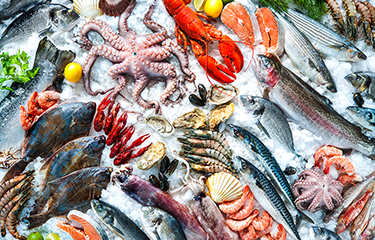NOAA Fisheries has issued the United States’ first National Seafood Strategy, a document intended to guide the federal government’s approach to supporting the seafood sector over the next five years.
“The strategy underscores NOAA’s strong commitment to seafood sector resilience and aligns with the Biden-Harris Administration's goals for economic recovery, environmental sustainability, and climate resilience,” the agency said in its announcement. “The strategy also responds to the unprecedented challenges facing the U.S. seafood industry, including climate change, the coronavirus pandemic, new technologies, and other ocean uses, significant labor shortages, and aging infrastructure.”
The strategy outlines four main goals for the United States:
- Maintain or increase sustainable U.S. wild capture production;
- Increase sustainable U.S. aquaculture production;
- Foster access to domestic and global markets for the U.S. seafood industry; and
- Strengthen the entire U.S. seafood sector.
One of the major issues the strategy aims to address is American seafood consumption, which the White House Conference on Hunger, Nutrition, and Health highlighted as an area for improvement.
“It is important to remember that seafood is one of the most under-consumed foods in American diets,” the National Fisheries Institute noted in its public comments on the draft strategy. “Nearly all Americans across all ages – 90 percent on average – have seafood intakes below recommended amounts.”
The agency released its draft strategy in February and spent the intervening months gathering hundreds of pages of feedback from stakeholders. Public comments were largely supportive, with some like the Southern Shrimp Alliance expressing the need for the government to only promote domestic production. A recent report from the Senate Appropriations Committee directed NOAA Fisheries to ensure the strategy did not promote the sale of imported seafood.
Others, such as the New Bedford Port Authority (NBPA) in the U.S. state of Massachusetts, pointed out that the seafood industry is facing “unprecedented challenges,” including the White House’s efforts to commit 30 percent of lands and oceans to conservation by 2030.
“Fishermen and the industry as a whole have been dealing with varying degrees of federal regulations over the years and have a deep concern that the government may not always be doing what is best to maintain a thriving and profitable fishing industry now and in the future,” the group said.
With the strategy finalized, the next step for NOAA Fisheries is developing an implementation plan that will lay out the specific actions and policies it will undertake to achieve its stated goals.
“To implement the strategy, NOAA Fisheries will partner with state, tribal, and other federal agencies, the National Sea Grant College Program, Regional Fisheries Management Councils, Interstate Commissions, academia, non-government organizations, harvesters, seafood farmers, and other partners or stakeholders to address the challenges facing the seafood sector, especially when resources are limited,” NOAA Fisheries said in the strategy.
Photo courtesy of Shutterstock / Alexander Raths







